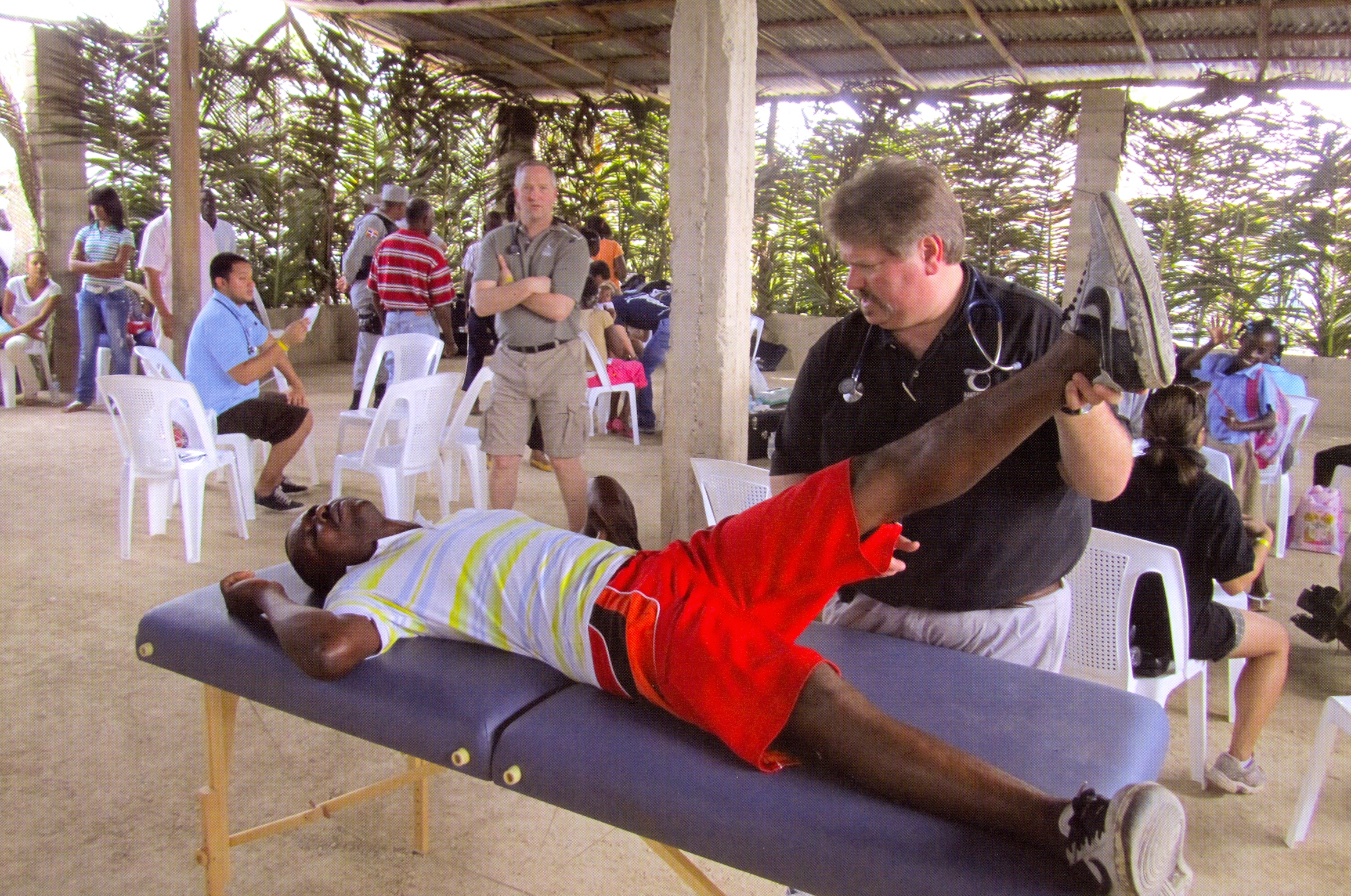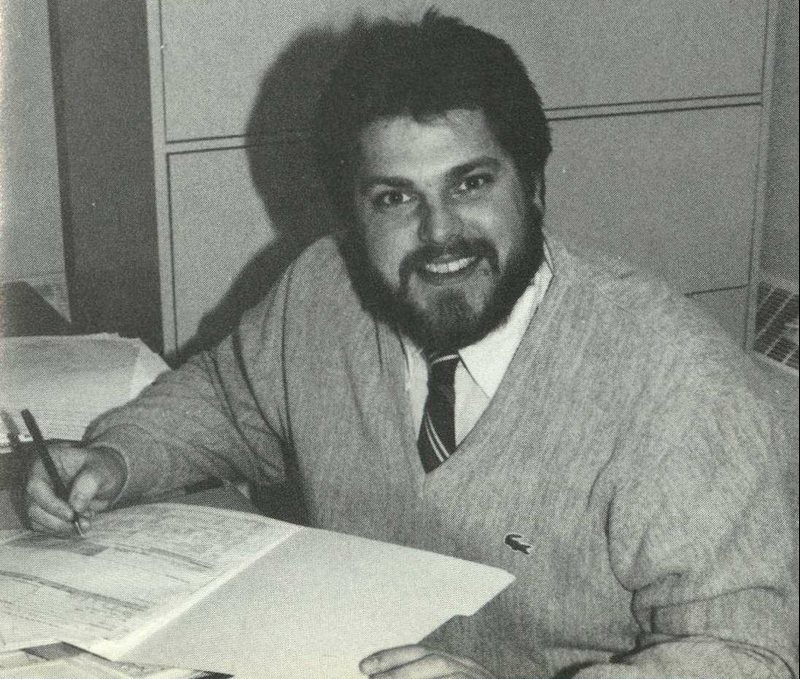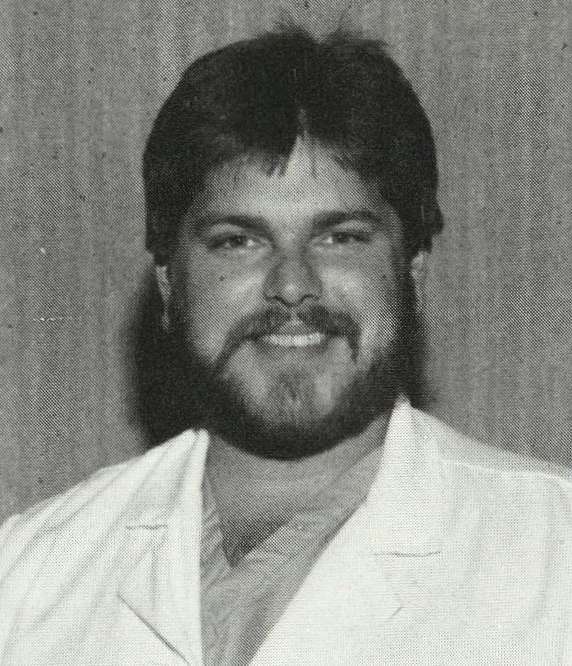Dr. Kevin Treffer Celebrates Dual KCU Milestones

Kansas City University has long played a special part in the life of Kevin Treffer, DO, FACOFP, and 2022 is an especially significant year, as it marks several anniversaries.
Not only is it Treffer’s 35-year class reunion, but he also celebrated 30 years on faculty in July. Today, Treffer is the Chair of Osteopathic Manipulative Medicine and is an Associate Professor on the Kansas City campus. KCU also holds a special family legacy: His mother and his late father met at the University, and his father, Frederick Treffer, DO, was in the Class of 1947.
Dr. Treffer recently shared several of his favorite KCU memories from over the past 35 years. This interview has been edited for length and clarity.
1. What are some of your favorite memories from your days as a student at Kansas City University?
We always had a group that put on a class party with a different theme at the end of each year. There was a lot of camaraderie amongst my classmates. We knew each other fairly well, because we did a lot together. That was always fun.
We have lots of great memories, just helping each other relieve a little stress. There’s one memory I have from our second year. There was a huge ice storm which caused significant power outages around the city. This happened on a Sunday night, the night before exam week.
I lost power Sunday evening and finished studying for a biochemistry test the next day using a Coleman lantern. The rest of that week, I never got power back. We didn’t have any heat in the house. There were a lot of us who were studying in the basement of [University Hospital], camping out and trying to find places to catch a few hours of sleep. We all helped each other.
2. Are there any events you remember that might not ever happen in today’s world?
I was a notetaker for a couple of different courses. I was responsible for the whole process of it. I was assigned a lecture, I’d go home, review the tape recording and transcribe the lecture in outline form. Then, that went to somebody who typed it up. Our class owned a printer, so we would print out the notes. Once they were printed, they were put into stacks, and you knew to grab copies of all the pages for each lecture. As a student, you signed up for different jobs to help fellow classmates get things done.
When I was a student here, the only required piece of equipment was a dual ocular microscope with a certain number of levels of magnification. And now, it’s an iPad. That’s changed a lot, and how you view and review because we would get a box of slides of organs. We could identify tissues, and that’s how they set up the exams and practicals. We’d go from microscope to microscope to microscope.
3. How did KCU shape your career as an osteopathic physician and leader in your community?

It provided me with a way to earn my degree and become a physician. I also got the full-ride scholarship for my second, third, and fourth years. I actually paid back my time to the University, as I worked in the clinics for three years as an instructor in family medicine. When I left, I practiced for two-and-a-half years on my own, and that’s when the University called me and said, “Hey, we really need some help teaching OMT here.”
(Dr. Treffer cited his mentors, Elaine Wallace, DO (COM ’80); John Glover, DO; and William Brooks, DO, for the impact they have had on his career. Dr. Brooks, especially, inspired Dr. Treffer to pursue his NMM-OMM certification.)
4. What is the legacy you hope to leave as an alumnus and as a professor at KCU?
My long-term investment here is to create a strong department whose goal is to teach our students how to properly apply osteopathic principles to every patient encounter, inclusive of hands-on OMT manipulative treatments, to help our patients find health. Our students need to have third- and fourth-year opportunities to practice. I’m in the process of developing an OMM elective rotation for students to do in a clinical rotation. That will be started here, hopefully this fall.
That, then, leads to my ultimate goal, which is to start an NMM-OMM residency in Kansas City and train specialists such as myself. That’s something I’d like to get done in the next six years or so.
5. What are your favorite memories from the last 30 years of teaching at KCU?
This was kind of fun: Several years ago, we were doing some live demonstrations in the classroom of treatments, relative to whatever we’d been teaching. So, this was a musculoskeletal complaint and it was geriatric. So, my mom – at the age of 90; she’s 94 now – this was just after she’d had both of her knees replaced. She reads constantly, and she does crossword puzzles. She also regularly does 1,000- and 1,500-piece puzzles.
So, at 90, I brought her and didn’t tell anybody who she was. I just introduced her as our patient, Jane. She doesn’t look like she’s in her 90; she looks like she’s more in her 60s, early 70s, maybe.
At the end, there were gasps in the classroom when she said that she was 90 years old.
I said that, “You know, the lady that’s sitting before you, that’s 90 years old, her first job when she came to Kansas City off the farm in northern Missouri was one of the administrative assistants to the president of this college. That’s where she met my dad, and that’s where it all started for all of us kids.” So, that was fun, and that was a really cool experience.
6. What message would you like to offer to your fellow Class of 1987 classmates?
Reflecting back, my message to them is to understand that the University as it was when we were here as students and the fighting we had with the administration – it’s not that anymore. Look at the issue. Understand both sides of it. How is it going to affect you? Does it affect you? Can you live with it or not? And then, move on, and try to make things better. My ultimate goal is, “Why am I here?” And, that’s to train people to become an osteopathic physicians.
7. What advice would you offer to today’s osteopathic medical students at KCU, and beyond?
With such a large class, they’re going to need to make sure they socialize and get to know people in their class. Start a study group right off the bat to go over things each week. That’s where their support and lifelong friendships will come from. I think that’s critical.
Compiled and written by Adrianne DeWeese.
